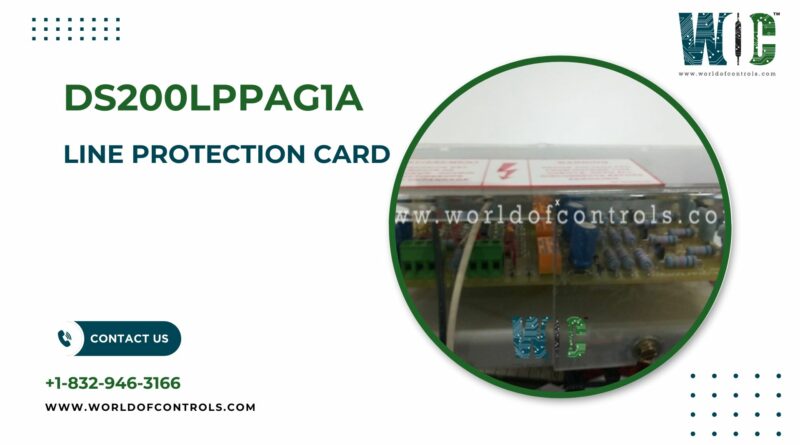Cutting-Edge Solutions for Effective Line Protection in Electrical Networks
In modern electrical networks, ensuring the reliability and stability of power distribution systems is paramount. One of the most crucial aspects of this is the protection of transmission lines, which are often exposed to faults, overloads, and other disturbances. Advanced line protection technologies play a vital role in mitigating these issues, offering improved operational efficiency and minimizing downtime. Among the innovative solutions, the use of specialized line protection cards has proven to be an essential advancement in safeguarding power systems.
The Importance of Line Protection
Transmission lines are essential for the delivery of power from generation sources to consumers. However, they are susceptible to a wide range of faults, such as short circuits, ground faults, and overcurrent conditions. If these faults are not quickly detected and cleared, they can cause significant damage to the network, resulting in power outages, equipment failure, and even safety hazards. Line protection systems are designed to detect these faults and isolate affected sections, ensuring the rest of the network remains operational.
The role of line protection extends beyond just fault detection. It also involves monitoring the system’s operational parameters to ensure that everything is functioning within safe limits. Proper protection settings help prevent overloads, minimize the risk of cascading failures, and reduce maintenance costs by quickly identifying issues before they escalate.
Overview of Advanced Line Protection Solutions
Among the cutting-edge technologies available for line protection, the latest advancements include microprocessor-based protection devices and modular protection cards. These solutions offer superior fault detection, speed, and accuracy, which are critical for maintaining the integrity of electrical systems. Advanced line protection cards have become an integral component of modern electrical networks, providing enhanced protection features in a compact and scalable form.
A typical line protection card is designed to interface with the electrical network, continuously monitoring line parameters such as voltage, current, and frequency. It processes real-time data, detecting any abnormalities that could indicate a fault or potential hazard. Once a fault is detected, the card initiates a protection mechanism that isolates the affected line or equipment to prevent further damage.
Key Features of Line Protection Cards
- Fault Detection and Isolation: One of the most critical functions of a line protection card is to detect faults in real-time. It continuously monitors the network for signs of abnormal conditions, such as short circuits, ground faults, or overcurrent events. Upon detecting a fault, the card activates a protective relay to isolate the affected section of the network, thus preventing widespread damage.
- Speed and Accuracy: The speed at which a protection system responds is crucial to minimizing the impact of faults. Modern line protection cards are designed for rapid response, typically operating in milliseconds, ensuring that faults are isolated before they can cause significant damage. The precision of these systems is also vital, as they need to differentiate between actual faults and temporary disturbances to avoid unnecessary system shutdowns.
- Versatility and Adaptability: Advanced protection cards are highly versatile and can be customized to suit a wide range of applications. Whether it is a radial, loop, or meshed network, line protection cards can be configured to meet specific network requirements. They can also be integrated with existing protection schemes, offering a seamless upgrade to legacy systems.
- Remote Monitoring and Diagnostics: Many modern line protection systems offer remote monitoring capabilities, allowing operators to access data and diagnostics from a centralized location. This helps to streamline operations and reduce the need for on-site intervention, which can save time and resources.
- Communication Protocols: Integration with communication networks is another important feature. Line protection cards often support industry-standard communication protocols, such as Modbus, IEC 61850, and DNP3, allowing them to exchange information with other protective relays, supervisory control systems, and monitoring stations. This enhances the coordination and effectiveness of the overall protection system.
Benefits of Using Line Protection Cards
The implementation of advanced line protection solutions brings several advantages to electrical networks. One of the primary benefits is improved system reliability. With the ability to detect faults and initiate protective actions swiftly, line protection cards help maintain the stability of the network, ensuring continuous power supply and minimizing downtime.
Another key benefit is the reduction in operational and maintenance costs. By preventing catastrophic failures and facilitating early fault detection, these protection cards enable quicker response times and more efficient maintenance planning. The ability to remotely monitor the system also allows for predictive maintenance, reducing the need for unplanned service interruptions.
Finally, line protection cards improve safety by reducing the risk of electrical hazards. By quickly isolating faults and minimizing the duration of disturbances, these systems help protect both equipment and personnel from potential harm.
Summary
In conclusion, the use of advanced line protection solutions in electrical networks is essential for ensuring the safe, reliable, and efficient operation of power distribution systems. Line protection cards offer a range of benefits, including enhanced fault detection, rapid response times, and improved system reliability. As electrical grids continue to evolve and expand, the importance of cutting-edge protection technologies cannot be overstated. These solutions will remain a cornerstone in maintaining the integrity of power networks and safeguarding them against emerging challenges.




